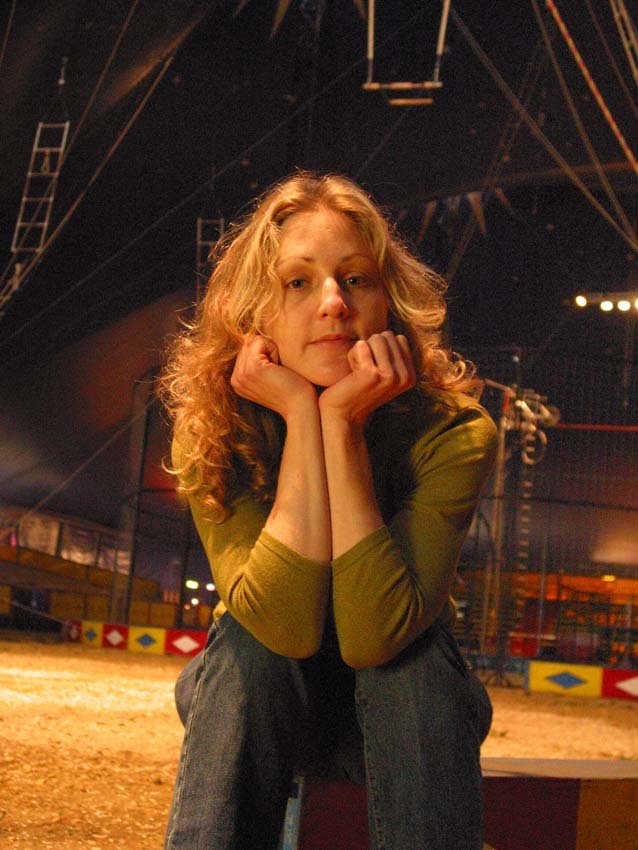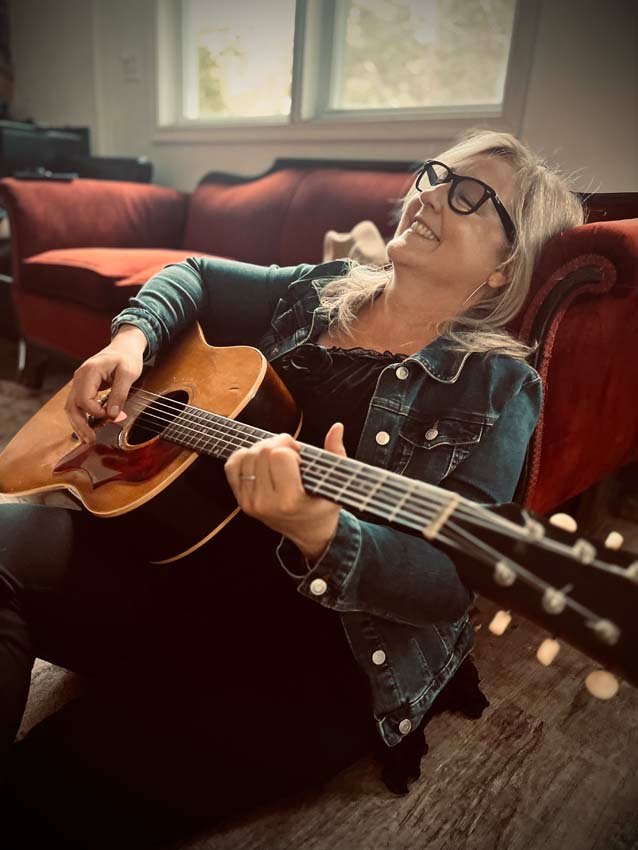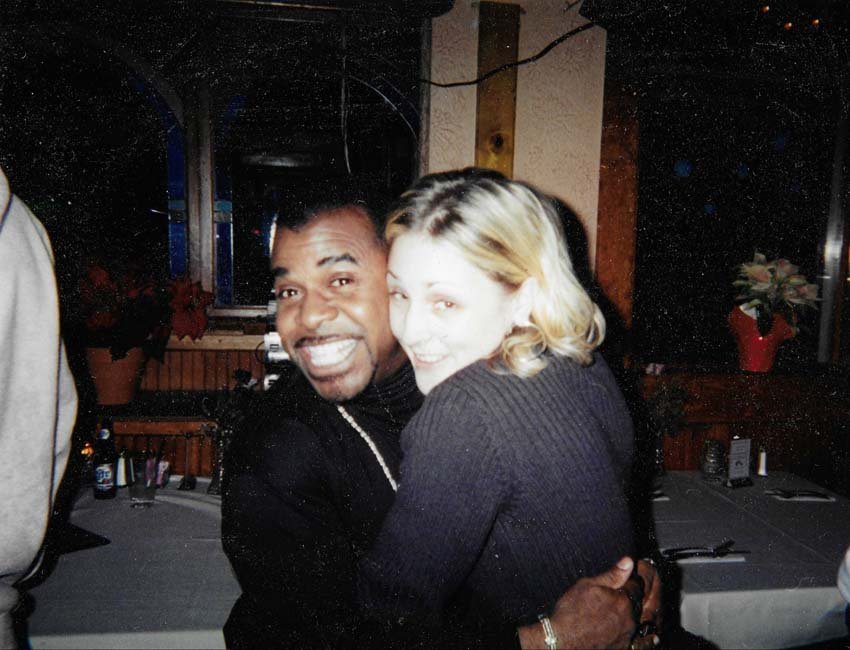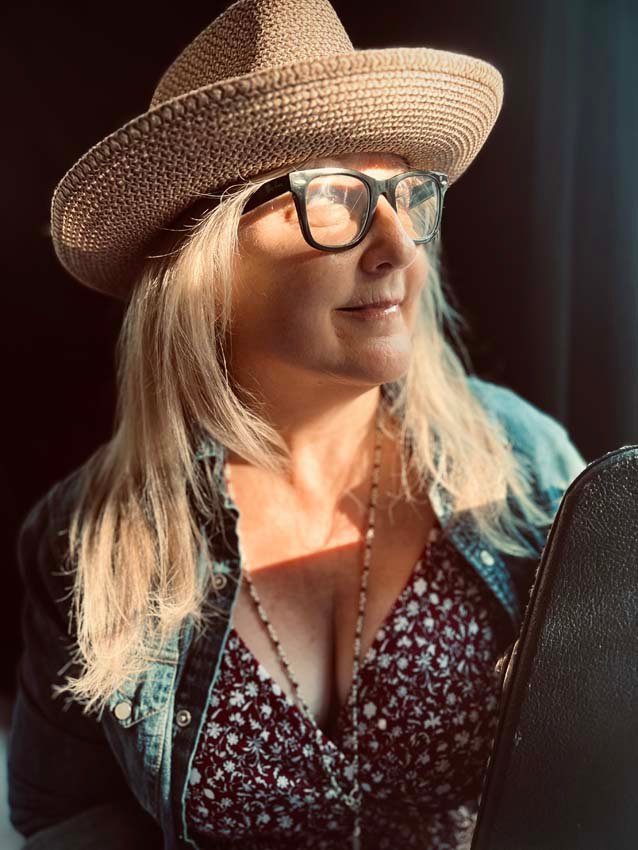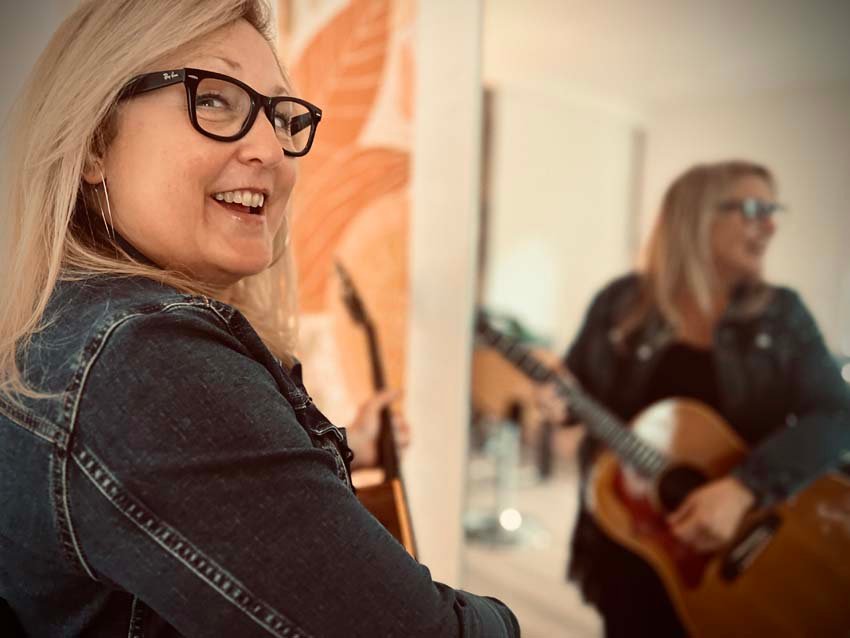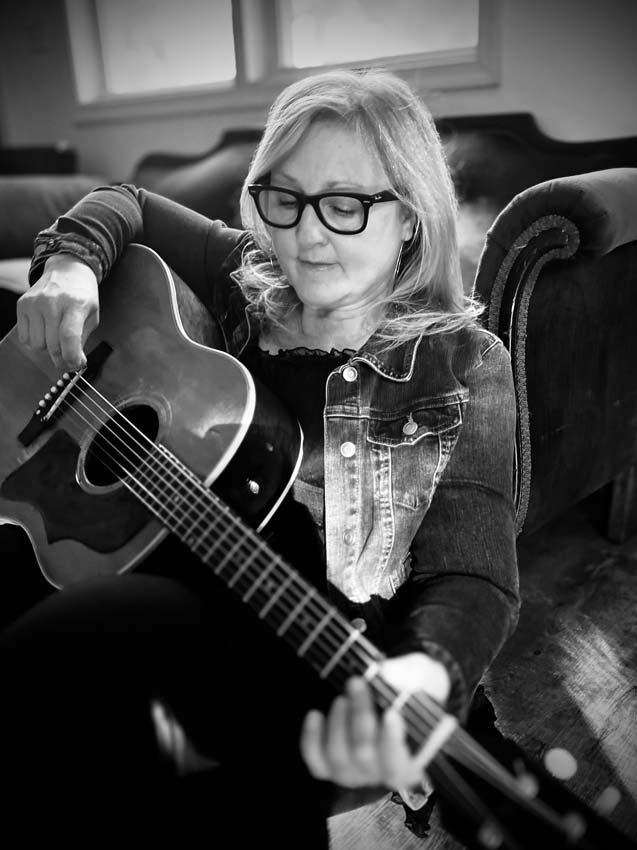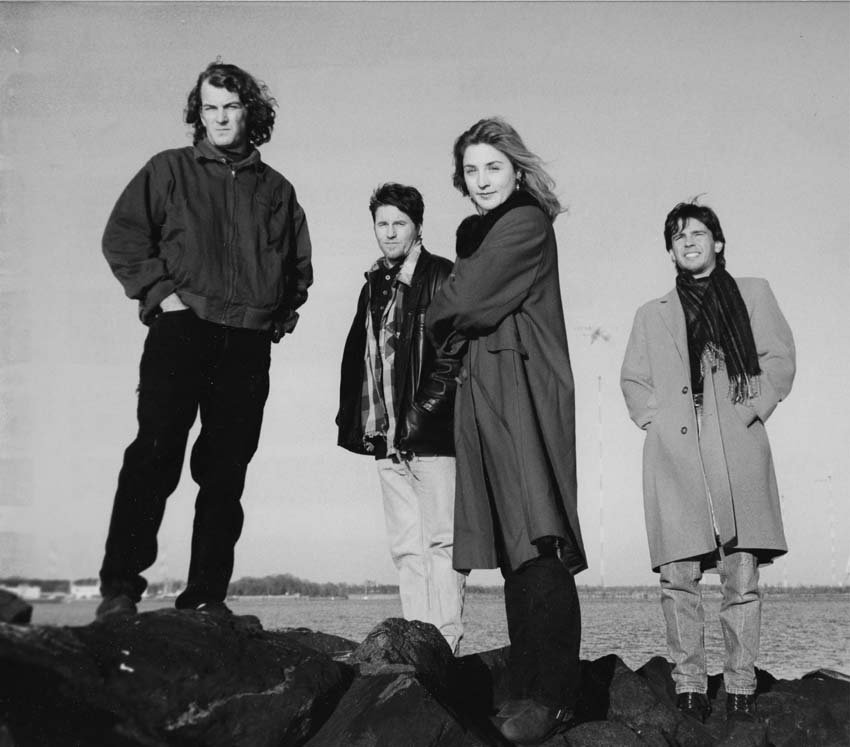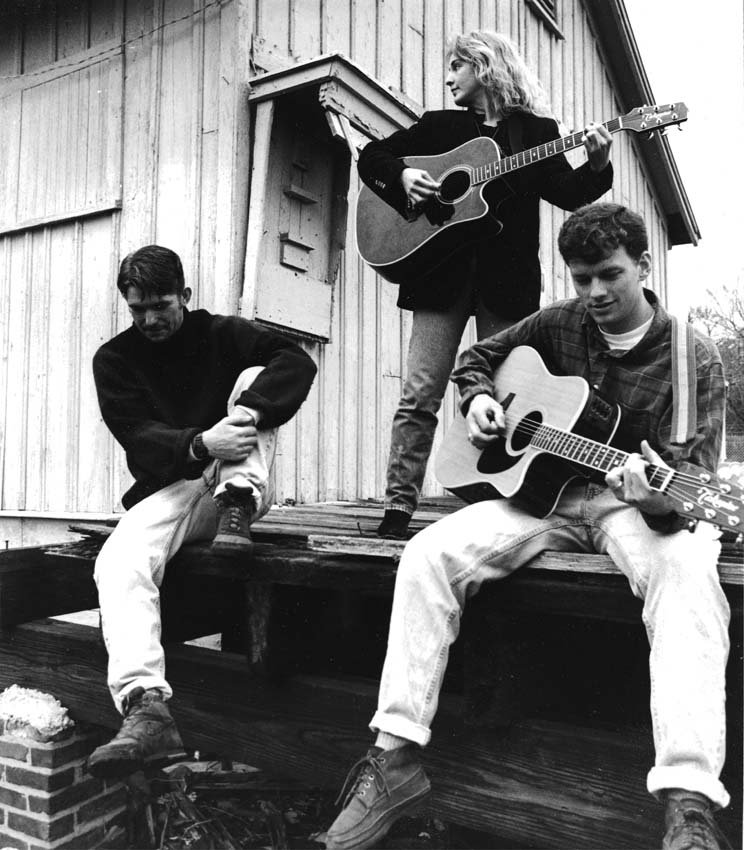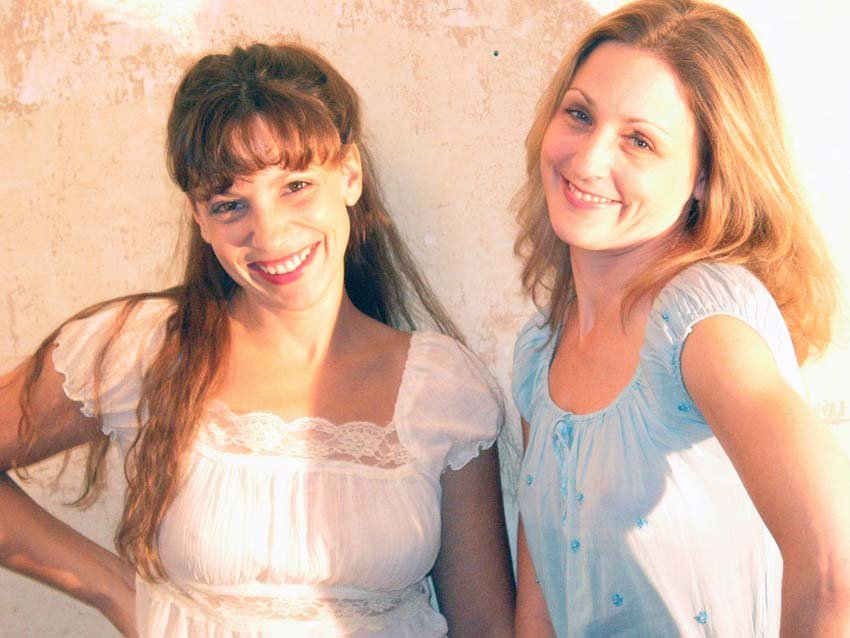+ By Rahsaan “Wordslave” Eldridge + Photos courtesty of Meg Murray
Meg Murray has always known that she was a performer. As a young child in Severna Park, she watched Sesame Street and listened to her parents’ records, including those by The Beatles, The Monkees, and John Denver. She’d stand on the coffee table and make the family gather around to watch her and her younger sisters pretend to be The Beatles. Murray would assign the roles: “You’re Paul, you’re Ringo . . .” According to her mother, Murray knew all the words to Don McLean’s song “American Pie” at just three years old. Her mother’s singing around the house was also an influence. “She sounded like an angel,” says Murray.
Born in Washington, DC, Murray lived briefly in Greenbelt before the family moved to Severna Park and, when she was in the fourth grade, ultimately settled in Calvert County. The area was more diverse than where she’d lived in Severna Park. The move had a profound effect on her. She played volleyball, roller-skated, and ran around on a farm. Her musical palette broadened, listening to local radio, and friends turned her on to country music and go-go. Her musical tastes spread further with artists such as Prince, AC/DC, and Led Zeppelin, whose records she used to sneak into the house from the library because she wasn’t allowed to listen to them—her solution was to swap out the covers for The Police or some other artists she knew her mother wouldn’t object to.
Murray performed in plays and sang in the school, county, and state choirs. Her middle school chorus teacher lauded her voice and encouraged her to consider it as a career path. At that time, Murray’s idea of a professional musician meant being famous, but she later realized that fame was not a requirement for success. After graduating from high school, at Washington College, she studied humanities at the behest of her parents, who wanted her to have something to fall back on. Murray thought that was reasonable, as there was a recession at the time, but she continued singing in bands around town and taking vocal lessons while she studied.
After college, Murray earned her teaching certificate and started teaching middle school in Elkton. She taught for six years while performing throughout Maryland. She draws parallels between teaching and performing. “I feel like middle schoolers are just like musicians,” she says. “Everybody, ultimately, when they’re expressing themselves, is their 12-year-old self. You’re growing into yourself. Your mind is starting to logic, and you’re starting to reason and form opinions before anybody squashes you down and says, ‘No, you can’t think that.’”
She eventually left teaching, frustrated with the lack of support and the need for reform. She recognizes new challenges that teachers face today, with increased distractions due, in part, to cell phones and too much access to technology. Those weren’t the obstacles that she faced while teaching in the mid-1990s. But Murray still loves teaching and hopes to return to it full-time someday. “Teaching isn’t magical and performing isn’t magical,” says Murray, “but they are, in the sense that I’m sharing something with you, and you’re connecting with that, and we’re sharing that experience together.”
If anything supersedes her love for teaching, it’s performing. As a college student and as a teacher, she’s never stopped performing. The litany of bands that she either started or joined includes Yellow House, Hussy, August West, Non-Fiction, and Blue Miracle. She usually prefers to perform within a group instead of solo. However, her ambition and prowess as a singer-songwriter has led her to much solo success.
When Murray left teaching, she supported herself through music and made a name for herself as one of the best musicians to work with. “I was gigging seven nights a week, playing with really cool people, and going to do really cool things,” she says. “I found my people. That’s when I knew I was a real musician.”
Famed producer and Annapolitan Bill Pettaway, responsible for producing Milli Vanilli’s 1988 hit, “Girl You Know It’s True,” met Murray when she approached him at his gas station job (which he kept, even after his top-five Billboard success) by asking, “Hey, are you Bill Pettaway?” “Who wants to know?” he replied. “Me. I’m Meg Murray. You need to know me.” The meeting led to Pettaway introducing her to super producer Timbaland, who’s worked with some of the industry’s top artists, including Missy Elliott, Jay-Z, and Justin Timberlake. Murray went to New York and worked on some songs with Timbaland but was never signed as an artist to the label.
When she returned to Maryland, she connected with guitarist and producer Todd Kreuzburg to rerecord the demos, which became the solo CD Ready, of which she is most proud. They worked for two years, using Logic, a digital audio workstation that was relatively new in 2002. “He treated me as an equal,” says Murray, “and was always open to my ideas and creativity, not only as a songwriter and singer but as a producer and arranger.” She cites Kreuzburg’s patience as a key to finding her own voice. Working digitally helped her unlock ideas in her head that she wasn’t necessarily able to play. “She was always really fun to work with. Always pretty much open to any idea,” says Kreuzburg, “a really strong writer, a really strong singer, but also a really good friend.”
Murray has built a solid reputation as both an artist and a person. She shines not only because of her talent but also because she’s encouraging and supportive of those with whom she comes in contact. Laura Brino, singer-songwriter, educator, and founder of Wildhearts Academy (a homeschool collective that uses curriculum-based arts integration, wellness habits, and nature), works with Murray as members of the Songbird Collective, alongside fellow artists and musicians Danah Denice and Jeanette Lynn. The group’s mission: “To connect all women by providing a platform for storytelling and artistic expression, and a safe space to find commonality and community in our shared female experience.” It provides resources to women who have experienced trauma, in part by connecting them to impactful local services, and hosts the Songbird Festival, which highlights and features women performers. Brino expresses gratitude for Murray’s work and the ideas that she brings to the table. “She is the epitome of support and authenticity,” says Brino of Murray.
A standout moment for Brino was during a youth retreat for young women to teach empowerment and expression to middle and high schoolers. Murray spent an hour during break with a young lady who she’d noticed being reclusive. When asked why she’d been so quiet, the young lady told Murray, “Nobody asked me anything. You were the first person that asked me something.”
Murray was also a founding member of Annapolis Musicians Fund for Musicians, Inc., a nonprofit that provides financial relief for musicians who have lost work due to sickness, injury, or other circumstances, and she served as its secretary for 11 years. In all her years of touring she never noticed any other artistic community with an organization like AMFM that takes care of its artists in the same way. “This community is amazing!” says Murray.
For 30 years, Murray has given her talent and provided service to the community as a teacher, performer, organizer, and advocate. She’s an ambassador for the music scene and is always finding ways to contribute, to fill a need. One improvement she’s hopeful to see is increased diversity. She doesn’t yet know the solution but is optimistic about bridging the “two Annapolises.”
Besides being a musician, Murray is a mother, wife, daughter, and caregiver to ailing parents. She still finds time to entertain on stages all over Maryland, including frequent performances with longtime friends and collaborators Angie Miller and Bryan Ewald. She greets everyone with positive energy and a bright smile. She may not consider what she does magical, but we’re all lucky to be under her spell.
Meg Murray has always known that she was a performer. As a young child in Severna Park, she watched Sesame Street and listened to her parents’ records, including those by The Beatles, The Monkees, and John Denver. She’d stand on the coffee table and make the family gather around to watch her and her younger sisters pretend to be The Beatles. Murray would assign the roles: “You’re Paul, you’re Ringo . . .” According to her mother, Murray knew all the words to Don McLean’s song “American Pie” at just three years old. Her mother’s singing around the house was also an influence. “She sounded like an angel,” says Murray.
Born in Washington, DC, Murray lived briefly in Greenbelt before the family moved to Severna Park and, when she was in the fourth grade, ultimately settled in Calvert County. The area was more diverse than where she’d lived in Severna Park. The move had a profound effect on her. She played volleyball, roller-skated, and ran around on a farm. Her musical palette broadened, listening to local radio, and friends turned her on to country music and go-go. Her musical tastes spread further with artists such as Prince, AC/DC, and Led Zeppelin, whose records she used to sneak into the house from the library because she wasn’t allowed to listen to them—her solution was to swap out the covers for The Police or some other artists she knew her mother wouldn’t object to.
Murray performed in plays and sang in the school, county, and state choirs. Her middle school chorus teacher lauded her voice and encouraged her to consider it as a career path. At that time, Murray’s idea of a professional musician meant being famous, but she later realized that fame was not a requirement for success. After graduating from high school, at Washington College, she studied humanities at the behest of her parents, who wanted her to have something to fall back on. Murray thought that was reasonable, as there was a recession at the time, but she continued singing in bands around town and taking vocal lessons while she studied.
After college, Murray earned her teaching certificate and started teaching middle school in Elkton. She taught for six years while performing throughout Maryland. She draws parallels between teaching and performing. “I feel like middle schoolers are just like musicians,” she says. “Everybody, ultimately, when they’re expressing themselves, is their 12-year-old self. You’re growing into yourself. Your mind is starting to logic, and you’re starting to reason and form opinions before anybody squashes you down and says, ‘No, you can’t think that.’”
She eventually left teaching, frustrated with the lack of support and the need for reform. She recognizes new challenges that teachers face today, with increased distractions due, in part, to cell phones and too much access to technology. Those weren’t the obstacles that she faced while teaching in the mid-1990s. But Murray still loves teaching and hopes to return to it full-time someday. “Teaching isn’t magical and performing isn’t magical,” says Murray, “but they are, in the sense that I’m sharing something with you, and you’re connecting with that, and we’re sharing that experience together.”
If anything supersedes her love for teaching, it’s performing. As a college student and as a teacher, she’s never stopped performing. The litany of bands that she either started or joined includes Yellow House, Hussy, August West, Non-Fiction, and Blue Miracle. She usually prefers to perform within a group instead of solo. However, her ambition and prowess as a singer-songwriter has led her to much solo success.
When Murray left teaching, she supported herself through music and made a name for herself as one of the best musicians to work with. “I was gigging seven nights a week, playing with really cool people, and going to do really cool things,” she says. “I found my people. That’s when I knew I was a real musician.”
Famed producer and Annapolitan Bill Pettaway, responsible for producing Milli Vanilli’s 1988 hit, “Girl You Know It’s True,” met Murray when she approached him at his gas station job (which he kept, even after his top-five Billboard success) by asking, “Hey, are you Bill Pettaway?” “Who wants to know?” he replied. “Me. I’m Meg Murray. You need to know me.” The meeting led to Pettaway introducing her to super producer Timbaland, who’s worked with some of the industry’s top artists, including Missy Elliott, Jay-Z, and Justin Timberlake. Murray went to New York and worked on some songs with Timbaland but was never signed as an artist to the label.
When she returned to Maryland, she connected with guitarist and producer Todd Kreuzburg to rerecord the demos, which became the solo CD Ready, of which she is most proud. They worked for two years, using Logic, a digital audio workstation that was relatively new in 2002. “He treated me as an equal,” says Murray, “and was always open to my ideas and creativity, not only as a songwriter and singer but as a producer and arranger.” She cites Kreuzburg’s patience as a key to finding her own voice. Working digitally helped her unlock ideas in her head that she wasn’t necessarily able to play. “She was always really fun to work with. Always pretty much open to any idea,” says Kreuzburg, “a really strong writer, a really strong singer, but also a really good friend.”
Murray has built a solid reputation as both an artist and a person. She shines not only because of her talent but also because she’s encouraging and supportive of those with whom she comes in contact. Laura Brino, singer-songwriter, educator, and founder of Wildhearts Academy (a homeschool collective that uses curriculum-based arts integration, wellness habits, and nature), works with Murray as members of the Songbird Collective, alongside fellow artists and musicians Danah Denice and Jeanette Lynn. The group’s mission: “To connect all women by providing a platform for storytelling and artistic expression, and a safe space to find commonality and community in our shared female experience.” It provides resources to women who have experienced trauma, in part by connecting them to impactful local services, and hosts the Songbird Festival, which highlights and features women performers. Brino expresses gratitude for Murray’s work and the ideas that she brings to the table. “She is the epitome of support and authenticity,” says Brino of Murray.
A standout moment for Brino was during a youth retreat for young women to teach empowerment and expression to middle and high schoolers. Murray spent an hour during break with a young lady who she’d noticed being reclusive. When asked why she’d been so quiet, the young lady told Murray, “Nobody asked me anything. You were the first person that asked me something.”
Murray was also a founding member of Annapolis Musicians Fund for Musicians, Inc., a nonprofit that provides financial relief for musicians who have lost work due to sickness, injury, or other circumstances, and she served as its secretary for 11 years. In all her years of touring she never noticed any other artistic community with an organization like AMFM that takes care of its artists in the same way. “This community is amazing!” says Murray.
For 30 years, Murray has given her talent and provided service to the community as a teacher, performer, organizer, and advocate. She’s an ambassador for the music scene and is always finding ways to contribute, to fill a need. One improvement she’s hopeful to see is increased diversity. She doesn’t yet know the solution but is optimistic about bridging the “two Annapolises.”
Besides being a musician, Murray is a mother, wife, daughter, and caregiver to ailing parents. She still finds time to entertain on stages all over Maryland, including frequent performances with longtime friends and collaborators Angie Miller and Bryan Ewald. She greets everyone with positive energy and a bright smile. She may not consider what she does magical, but we’re all lucky to be under her spell.
